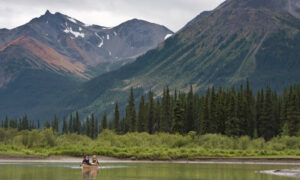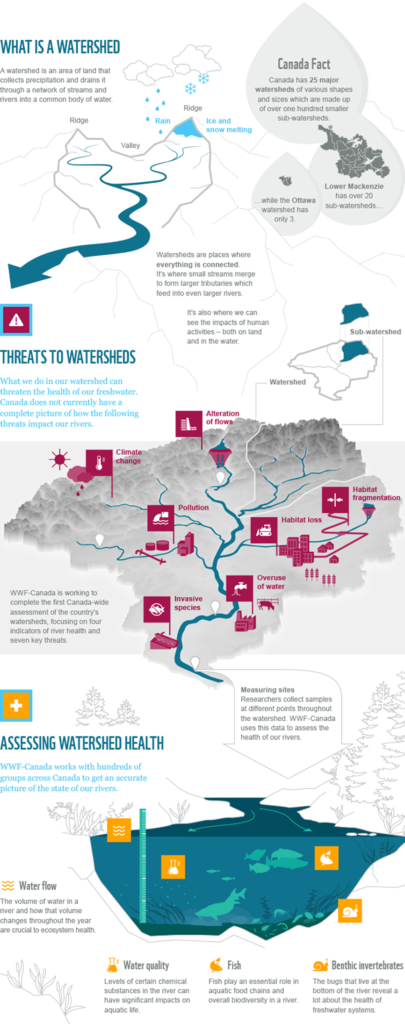
Toronto – This July, for the first time, all Canadians will have access to comprehensive and easy-to-understand information about the health of one of our most valuable resources: freshwater.
“WWF’s new research will help Canadians learn more about the overall health of Canada’s freshwater,” says David Miller, President and CEO of WWF-Canada. “We hope Canadians will explore watershedreports.wwf.ca to learn more about the health of, and threats to, their own watershed. We hope people will find inspiration in our work so that they can take action in their own communities.” The new website also features the locations of WWF-Canada’s Loblaw Water Fund grantees — organizations and individuals who are engaged in maintaining and monitoring the health of, and threats to, their local watersheds.
To date, WWF has assessed 50 per cent of the country’s watersheds based on four indicators of health; water flow, water quality, benthic invertebrates (bugs) and fish; and seven threat indicators: pollution, climate change, habitat loss and fragmentation, overuse of water, alteration of water flows and invasive species.
The results of our assessments indicate that many of Canada’s watersheds are confronted with significant threats, which are already leading to changes in the ecological condition of rivers and watersheds.
“Our assessment aims to provide a consistent and accessible way for Canadians to learn the status of their freshwater ecosystems — which is crucial if we want to ensure healthy waters for the future” says James Snider, VP Freshwater. “Perhaps the biggest cause for the concern is the lack of available data to confidently report on the health of many of Canada’s watersheds. This cross-Canada overview is a crucial step towards effective stewardship of Canada’s freshwater health.”
This user-friendly website is meant to be a core resource to help guide watershed management, and the development of new policies and programs – and help Canadians get to know the watershed they live in.
The results of this detailed analysis are now available at watershedreports.wwf.ca – WWF’s new interactive web platform.
Since 2011, WWF-Canada has worked with scientific advisors across the country to develop a robust methodology, and to gather the necessary data to create a picture of how healthy Canada’s watersheds are, and by 2017, WWF-Canada will have assessed all of Canada’s watersheds, in support of the larger goal of maintaining all of Canada’s waters in good ecological health by 2025.
Key results include:
- One of the most significant threats to Canada’s rivers is pollution. This threat is highest in the Great Lakes watershed, the North Saskatchewan, South Saskatchewan, Ottawa, St. Lawrence and Saint John–St. Croix rivers.
- Along with pollution, habitat fragmentation is a key threat for many of Canada’s watersheds, particularly Fraser, North Saskatchewan, South Saskatchewan, Great Lakes watershed, Ottawa and St. Lawrence rivers.
- Of the assessed watersheds, only the St. John and St. Lawrence achieved a score of good health.
- For half of the 12 watersheds assessed to date, there wasn’t enough publically available data to confidently assign a health score.
Discover more from thegreenpages
Subscribe to get the latest posts sent to your email.

